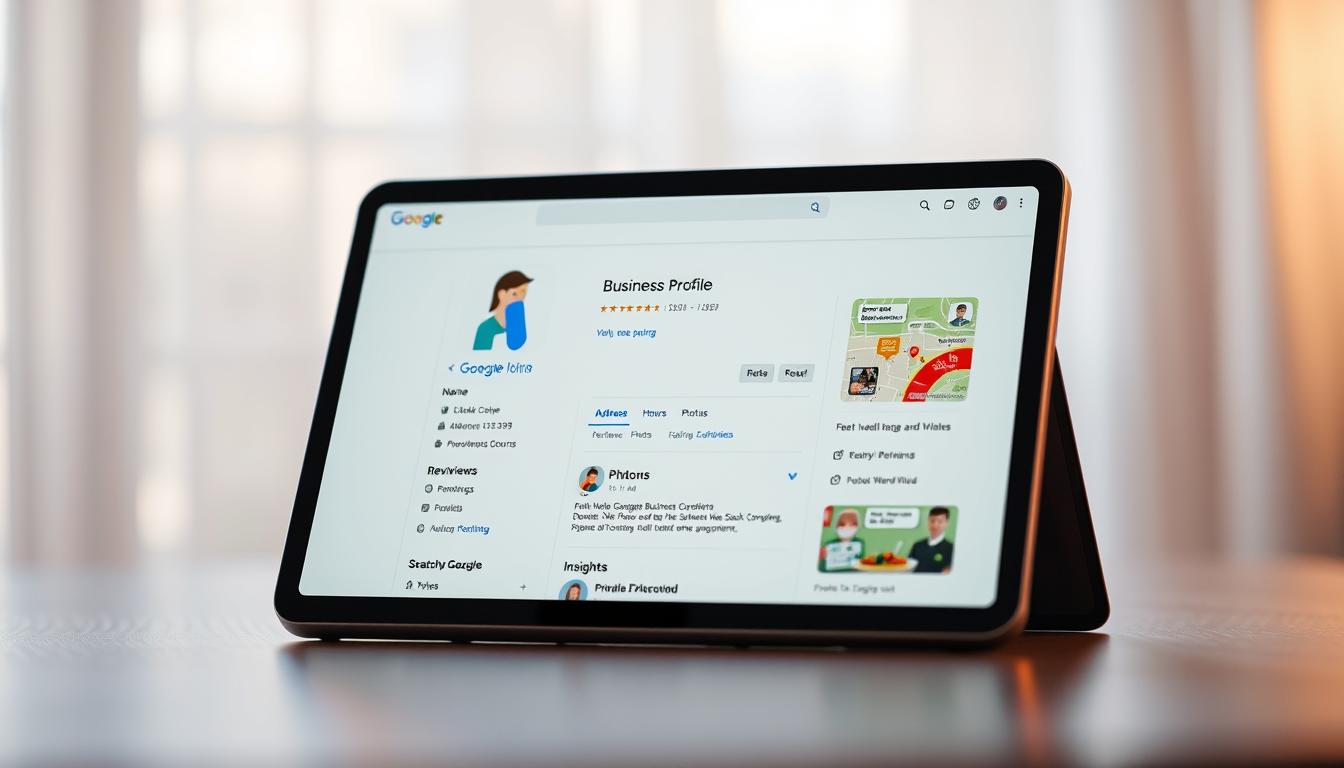As we navigate the ever-evolving landscape of digital marketing, understanding search intent has become crucial for creating content that resonates with our audience.
When users search online, they have a specific goal in mind. Recognizing this intent is vital for developing a keyword strategy that drives meaningful engagement and conversions.
By aligning our content with user needs, we can improve search engine rankings and deliver relevant content that meets the needs of our audience.
To achieve this, we’ll explore the critical concept of user intent and its role in shaping a successful keyword strategy.
Key Takeaways
- Understanding user intent is essential for effective SEO.
- Recognizing search intent helps create relevant content.
- Aligning content with user goals improves search engine rankings.
- Mastering user intent transforms keyword research into a strategic approach.
- Using the right tools and techniques can help you harness user intent in your keyword strategy.
Understanding the Power of User Intent
User intent has emerged as a pivotal factor in determining the effectiveness of SEO efforts in the current digital landscape. As search engines continue to evolve, their primary goal remains unchanged: to provide users with the most relevant and satisfying results for their queries. This shift towards understanding and catering to user intent has significantly impacted how we approach content creation and optimization.
To grasp the concept of user intent in SEO, we must first understand what it entails. User intent refers to the underlying reason or goal a user has when conducting a search. It’s about aligning our content with what the user is actually looking for, rather than just focusing on the keywords they use.
What is User Intent in SEO?
User intent in SEO is the process of understanding and catering to the needs and goals of users when they perform a search. It involves creating content that not only matches their search queries but also provides the information or solution they are seeking. By doing so, we assist search engines in their core mission, increasing the chances of our content being deemed worthy of a top spot.
For instance, a user searching for “best Italian restaurants” is likely looking for recommendations or reviews. Content that provides a list of top-rated Italian restaurants, along with their specialties and reviews, would be considered aligned with user intent. We can explore this further by examining the various types of user intent and how they impact our content strategy.
Why User Intent Matters More Than Ever
The importance of user intent has grown significantly with advancements in search engine technology, particularly with updates like Google’s BERT and MUM. These updates have enabled search engines to better understand the nuances of language and the intent behind search queries.
Let’s examine the key reasons why user intent matters more than ever:
- Search engines have evolved from simple keyword-matching systems to sophisticated platforms that prioritize relevance and user satisfaction.
- The rise of voice search and mobile browsing has further emphasized the importance of understanding natural language queries and their underlying intent.
- Content that mirrors user intent is more likely to satisfy the searcher, leading to longer dwell times, lower bounce rates, and overall improved user experience.
To illustrate the impact of user intent on SEO, let’s consider the following table:
| SEO Metric | Impact of User Intent | Result |
|---|---|---|
| Bounce Rates | Content aligned with user intent reduces bounce rates | Improved user engagement |
| Dwell Time | Relevant content increases dwell time | Better search engine rankings |
| Conversion Rates | Content that satisfies user intent leads to higher conversion rates | Increased sales and revenue |
By understanding and catering to user intent, we can significantly improve our SEO efforts and drive more meaningful results. For a deeper dive into optimizing your SEO strategy, visit our sample page for more insights.
The Four Types of Search Intent
To master keyword strategy, it’s essential to comprehend the four types of search intent that drive user queries. Understanding these intents can significantly enhance our ability to create content that resonates with our target audience and meets their needs effectively.
The classification of search intent into four categories – Informational, Navigational, Transactional, and Commercial Investigation – provides a framework for analyzing and catering to the diverse needs of users. Let’s delve into each of these categories to understand their characteristics and implications for our content strategy.
Informational Intent: Seeking Knowledge
Users exhibiting informational intent are seeking knowledge or answers to specific questions. They are not necessarily looking to make a purchase at this stage but are instead gathering information. Keywords associated with informational intent often include “what is,” “how to,” and “why.” Creating content that is informative, engaging, and provides value is crucial for capturing this intent.
Navigational Intent: Finding Specific Destinations
Navigational intent is characterized by users looking for a specific website, page, or destination. They typically use branded keywords or specific queries to find what they’re looking for. For instance, a user searching for “Facebook login” is exhibiting navigational intent. Optimizing our content for branded keywords and ensuring our website is easily accessible can help satisfy navigational queries.
Transactional Intent: Ready to Purchase
Transactional intent indicates that a user is ready to make a purchase or take a specific action. These users often use keywords that include terms like “buy,” “purchase,” “discount,” or “price.” For transactional intent, creating a seamless user experience, offering competitive pricing, and providing clear calls-to-action are vital.
Commercial Investigation Intent: Researching Options
Commercial investigation intent involves users researching products or services with the potential intention to make a purchase in the future. This intent is often associated with keywords like “best,” “top,” “review,” “compare,” and “vs.” Content that effectively targets commercial investigation intent includes comparison charts, product reviews, buying guides, and expert recommendations. We can leverage this intent by creating comprehensive and trustworthy content that aids users in their decision-making process.
- Defining commercial investigation intent and its significance in the purchasing process.
- Identifying common commercial investigation queries and the keywords associated with them.
- Exploring content formats that best serve commercial investigation intent, such as comparison charts and product reviews.
- Discussing strategies for creating content that builds trust and subtly positions our offering as the superior choice.
By understanding and catering to these four types of search intent, we can develop a more effective keyword strategy that aligns with the needs and behaviors of our target audience. This not only enhances our content’s relevance but also improves our ability to convert users into customers.
For a comprehensive marketing strategy that incorporates understanding and leveraging search intent, visit leap.14u.info to get your free complete marketing suite.
How Search Engines Interpret User Intent
Search engines have become increasingly sophisticated in interpreting user intent. This evolution is driven by advancements in algorithms and machine learning, enabling search engines to better understand the context and nuances of search queries.
To understand how search engines interpret user intent, we need to examine the various factors that influence their interpretation. One key aspect is the analysis of search engine results pages (SERPs), which provides insights into how search engines rank content based on user intent.
Google’s Evolution in Understanding Intent
Google has been at the forefront of understanding user intent, continually updating its algorithms to improve the relevance of search results. The introduction of search intent analysis has been a significant step in this direction, allowing for more precise matching of content with user queries.
A comprehensive SERP analysis reveals which types of content Google favors for specific search queries. This insight is essential for understanding content priorities. The ‘People Also Ask’ feature can reveal related questions that offer insights into user queries.
How SERP Features Signal Intent
Different SERP features correspond to specific types of user intent. For instance, featured snippets are often used for informational queries, while shopping carousels are more common for transactional searches. By analyzing these features, we can gain a better understanding of how Google interprets the dominant intent behind particular keywords.
- Examining how SERP features vary across different types of search queries can provide insights into user intent.
- Studying SERP layouts can reveal opportunities to target specific intent types that competitors may be overlooking.
- The presence of specific SERP features provides clear signals about how Google interprets user intent.
- SERP features have evolved to better address user intent, including the introduction of intent-specific elements like “People Also Ask” boxes and knowledge panels.
By understanding how search engines interpret user intent, we can develop more effective SEO strategies that align with the needs and goals of our target audience. For a comprehensive marketing suite that can help you achieve your SEO goals, consider exploring additional resources.
Harnessing the Power of User Intent in Keyword Strategy

The key to a successful keyword strategy lies in harnessing the power of user intent. By understanding the intent behind user searches, we can create content that not only resonates with our audience but also enhances our site’s SEO performance. This approach builds trust with our audience, fostering brand loyalty and increasing the likelihood of conversions.
When we cater to the search intent behind a keyword, we satisfy users and improve our site’s visibility. High-intent keywords play a pivotal role in transforming our digital marketing strategy and maximizing ROI. To achieve this, we need to align our keywords with user goals and move beyond traditional metrics.
Aligning Keywords with User Goals
Aligning keywords with user goals involves understanding the intent behind their searches. We challenge the traditional focus on search volume as the primary keyword selection metric and introduce intent-focused alternatives that better predict business impact. By evaluating keywords based on their potential to drive qualified traffic, we can create a more effective keyword strategy.
Our approach includes discussing advanced metrics for assessing keyword value, such as intent-match score, conversion potential, and competitive opportunity. We also provide frameworks for calculating the true business value of keywords based on their position in the customer journey and likelihood of driving conversions.
Moving Beyond Volume to Intent-Focused Metrics
To create a comprehensive keyword strategy, we need to balance high-intent, low-volume keywords with broader terms. This involves sharing techniques for forecasting the potential impact of intent-optimized content on key business metrics like leads, sales, and revenue. By creating custom scoring systems that weigh intent factors alongside traditional keyword metrics, we can prioritize content creation efforts effectively.
By implementing these strategies, we can transform our keyword research and optimization processes. We can drive more qualified traffic, increase conversions, and ultimately maximize our ROI. To get started with optimizing your keyword strategy, visit leap.14u.info to get your free complete marketing suite.
Identifying User Intent Behind Keywords
Identifying the intent behind keywords is a critical step in optimizing our content for search engines. To achieve this, we need to employ a range of tools and techniques that help us understand what users are really looking for when they enter specific search queries.
Analyzing Search Results to Determine Intent
One of the most effective ways to determine user intent is by analyzing the search results for specific keywords. By examining the types of content that are currently ranking, we can gain insights into what search engines believe is most relevant to users’ queries.
For instance, if the top results for a particular keyword are primarily informational blog posts, it’s likely that the dominant intent is informational. On the other hand, if the top results are product pages or transactional in nature, the intent is likely to be transactional or commercial.
Tools for Uncovering User Intent
Several keyword research tools exist to help analyze search intent, such as Google Keyword Planner, Moz Pro, and Semrush. Google Keyword Planner is completely free and aids in both exploratory keyword research and detailed search volume analysis.

Semrush offers an extensive suite of keyword research tools, including competitive gap analysis and detailed SERP features. Tools like Mangools KWFinder can help identify popular search queries. KWFinder indicates different types of search intent with unique letter icons: ‘I’ for informational, ‘C’ for commercial, ‘T’ for transactional, and ‘N’ for navigational.

We’ll review the most effective tools for uncovering user intent, from free options like Google’s “People Also Ask” and “Related Searches” to premium keyword research platforms. Specialized intent analysis tools like Semrush’s Intent Analysis and Clearscope can provide deeper insights into the intent behind specific keywords.
By combining data from multiple tools, we can create a comprehensive view of user intent in our niche. This includes using Google Search Console data to identify which intent-based queries are already driving traffic to our site and where opportunities exist.

Additionally, social listening tools can reveal the questions and concerns our audience expresses in their own words, helping us understand their true intent. Survey tools and customer feedback mechanisms can also be used to directly ask users about their goals and challenges.
Competitive analysis tools can help us understand which intent types our competitors are successfully targeting and where gaps exist. By leveraging these tools and techniques, we can refine our keyword strategy to better align with user intent.
Ready to unlock the full potential of your keyword strategy? GO HERE => leap.14u.info TO GET YOUR FREE COMPLETE MARKETING SUITE.
Creating Content That Matches Search Intent
To truly connect with your audience, your content must match their search intent. This alignment is crucial for enhancing user experience and driving conversions. By understanding the intent behind search queries, we can tailor our content to meet the specific needs of our audience.
Optimizing for Informational Queries
Informational queries are driven by users seeking knowledge or answers to specific questions. To optimize for these queries, we need to create content that is informative, clear, and concise. This can include blog posts, articles, and guides that provide valuable insights and information on a particular topic.
Key strategies for optimizing informational content include:
- Conducting thorough research to provide accurate and up-to-date information
- Using clear and concise language to convey complex information
- Structuring content with headings and subheadings for better readability
Crafting Content for Navigational Searches
Navigational searches are characterized by users looking for a specific website or webpage. To craft content for these searches, we need to ensure that our website is easily discoverable and that our content is optimized for relevant keywords.
Effective techniques for navigational content include:
- Optimizing meta tags and titles with relevant keywords
- Ensuring website architecture is logical and easy to navigate
- Using internal linking to guide users to relevant pages
Converting Transactional Intent into Sales
Transactional intent is driven by users ready to make a purchase. To convert this intent into sales, we need to create content that is persuasive, informative, and relevant to the user’s needs.
Strategies for converting transactional intent include:
| Content Type | Purpose | Key Elements |
|---|---|---|
| Product Descriptions | Provide detailed product information | Features, benefits, specifications |
| Customer Reviews | Build trust and credibility | Authentic testimonials, ratings |
| Call-to-Actions (CTAs) | Encourage purchases | Prominent CTAs, limited-time offers |
Engaging Commercial Investigation Searchers
Commercial investigation searchers are researching options before making a purchase. To engage these users, we need to create content that is comparative, informative, and helpful in their decision-making process.

Effective content for commercial investigation includes:
- Comparison pieces that highlight the pros and cons of different products or services
- Buying guides that provide detailed information and recommendations
- Expert reviews that offer unbiased opinions and insights
By creating content that matches the search intent of our audience, we can improve user experience, drive conversions, and ultimately achieve our SEO goals. For a comprehensive marketing suite that can help you optimize your content and more, visit leap.14u.info to get your free complete marketing suite.
Advanced Strategies for Intent-Based Keyword Optimization
As we dive deeper into the world of intent-based keyword optimization, we uncover advanced strategies that can significantly enhance our SEO efforts. The ever-evolving landscape of search demands that we stay abreast of the latest techniques to align our content with user intent effectively.
One of the critical areas of focus is the role of long-tail keywords in capturing specific user intent. Long-tail keywords are more precise phrases that have lower search volumes but are also less competitive and often more targeted to a user’s specific needs. For example, a user searching for “best Italian restaurants in New York City” is likely further along in their decision-making process than someone searching for “Italian restaurants.” By targeting long-tail keywords, we can create content that more accurately matches the user’s intent, increasing the likelihood of conversion.
Long-Tail Keywords and User Intent
Long-tail keywords offer a window into the user’s specific needs and preferences. By analyzing these keywords, we can gain insights into the user’s search behavior and tailor our content to meet their expectations. For instance, a long-tail keyword like “vegan Italian restaurants in New York City” indicates a clear intent for vegan options, allowing us to optimize our content accordingly.
- Identify long-tail keywords relevant to your business or niche.
- Analyze the intent behind these keywords to understand user needs.
- Create content that directly addresses the user’s intent.
Voice Search and Conversational Intent
The rise of voice-activated devices has transformed the way users interact with search engines. Voice queries are typically longer and more conversational, often phrased as questions. To capture voice search traffic, we must adapt our content to answer these queries concisely and directly.
Voice search optimization involves understanding the natural language patterns and nuances of conversational intent. By structuring our content to directly answer voice search queries, we can improve our visibility in search engine results pages (SERPs) and capture a broader audience.
To optimize for voice search, we should focus on question-focused keyword research and structure our content to provide clear, concise answers. This not only enhances our accessibility but also positions us for success in the evolving voice search landscape.
By embracing these advanced strategies for intent-based keyword optimization, we can refine our SEO efforts, improve our content’s relevance, and ultimately drive more targeted traffic to our sites.
Ready to elevate your SEO strategy? Get your free complete marketing suite and start optimizing for the future of search today.
Measuring Success: KPIs for Intent-Optimized Content
The true value of intent-optimized content lies in its ability to drive meaningful engagement and conversions, which can be measured through specific KPIs. To understand the impact of our content on user intent, we need to track and analyze the right metrics.
To measure the success of intent-optimized content, we can use various analytics tools and techniques. Tools like Google Analytics and Google Search Console provide valuable insights into content performance, helping us understand how users interact with our site and the content we provide. By regularly tracking the performance of optimized pages, we can refine our content strategy to better align with user needs and improve overall SEO effectiveness.

Engagement Metrics That Signal Intent Alignment
Engagement metrics are crucial in determining whether our content aligns with user intent. Key engagement metrics include time on page, bounce rate, and pages per session. By analyzing these metrics, we can gain a deeper understanding of how users interact with our content and identify areas for improvement.
For instance, a high time on page and low bounce rate may indicate that our content is relevant and engaging for users, signaling strong intent alignment. Conversely, a high bounce rate and low time on page may suggest that our content is not meeting user expectations, requiring adjustments to better match their intent.
Conversion Metrics That Prove Intent Targeting Works
Conversion metrics are essential in measuring the business impact of intent-optimized content. By tracking conversions, we can determine whether our content is driving desired actions, such as form submissions, purchases, or downloads. To set up conversion tracking that aligns with different intent types, we need to recognize that success looks different for informational versus transactional content.
For example, informational content may be measured by micro-conversions, such as email sign-ups or newsletter subscriptions, while transactional content is often measured by revenue generation. By attributing conversions to specific intent-optimized content pieces across multi-touch customer journeys, we can calculate the ROI of intent-based content optimization and quantify its impact on business outcomes.
To further refine our intent targeting strategy, we can use conversion data to identify areas for improvement and optimize our content accordingly. By leveraging tools like affiliate marketing insights, we can gain a more comprehensive understanding of how our content drives conversions and adjust our strategy to maximize ROI.
Ready to elevate your content strategy and drive more meaningful engagement? Discover the power of intent-optimized content and unlock new opportunities for growth. GO HERE => leap.14u.info TO GET YOUR FREE COMPLETE MARKETING SUITE.
Common Mistakes When Targeting User Intent
When targeting user intent, several common pitfalls can derail even the most well-intentioned SEO strategies. Understanding these mistakes is crucial to creating content that resonates with users and ranks well in search engines.
One of the primary challenges is misinterpreting search intent signals. Search engines provide various signals through SERP features, but misreading these can lead to content that doesn’t align with user needs. For instance, a high ranking for a particular keyword doesn’t necessarily mean the content is satisfying the user’s intent.
Misinterpreting Search Intent Signals
Misinterpreting search intent can occur when we rely too heavily on keyword research without considering the context. For example, a keyword might have multiple possible intents, and without analyzing the SERP features and user behavior, we might create content that misses the mark.
To avoid this, we should analyze the top-ranking pages for our target keywords. This involves looking at the format, depth, and tone of the content. Are the top results comprehensive guides, or are they brief answers? Are they formal or informal?
| SERP Feature | Possible User Intent | Content Strategy |
|---|---|---|
| Featured Snippet | Informational/Quick Answer | Provide concise, accurate answers |
| Knowledge Graph | Informational/Entity-Based | Ensure accurate, structured data |
| Shopping Results | Transactional/Commercial | Include product information, pricing |
Creating Content That Doesn’t Satisfy Intent
Another critical mistake is creating content that doesn’t satisfy user intent. This can happen when we focus too much on keyword stuffing rather than providing value. Users are looking for content that answers their questions or solves their problems, not just content that includes certain keywords.
To create effective content, we need to understand the user’s needs and align our content strategy accordingly. This involves creating content that is not only relevant but also comprehensive and engaging.
For example, content that ranks well initially but suffers from high bounce rates may indicate an intent mismatch. Similarly, technical issues like slow page load times or poor mobile optimization can undermine otherwise well-aligned content.
To iteratively improve content, we should monitor engagement metrics and user feedback. This allows us to refine our content strategy and better align with user intent over time.
By avoiding these common mistakes and focusing on creating high-quality, intent-aligned content, we can enhance our online visibility and drive more organic traffic. For a comprehensive marketing suite that can help you achieve these goals, visit leap.14u.info to get your free complete marketing suite.
Conclusion: Transforming Your SEO Strategy Through User Intent
Understanding and leveraging user intent is the key to unlocking a more effective SEO strategy that drives real results. By grasping the power of search intent, businesses can revolutionize their approach to keyword strategy and content creation.
The four primary types of search intent – informational, navigational, transactional, and commercial investigation – each require a tailored approach to content optimization. By aligning keywords with user goals, businesses can connect with their audience at the right moment, driving meaningful engagement and conversions.
Continuous intent analysis is crucial as search engines evolve and user behaviors change over time. By staying ahead of these changes, businesses can maintain a competitive edge in their market. Mastering intent-based keyword optimization provides a significant advantage over those still focused solely on volume metrics.
To implement an intent-focused SEO strategy, businesses should follow a roadmap that includes keyword research, content creation, and performance measurement. As search engines continue to evolve, emerging technologies like AI will further refine our understanding of search behavior, allowing for even more precise targeting of user intent.
We encourage you to begin implementing intent-based optimization immediately to gain a competitive edge in your market. For additional tools to help you implement these strategies effectively, visit leap.14u.info to get your free complete marketing suite.
By understanding search intent and strategically targeting high-intent keywords, businesses can elevate their online presence, drive conversions, and see tangible improvements in their bottom line. It’s not just about traffic; it’s about attracting the right traffic.
FAQ
What is search intent, and why is it crucial for our SEO strategy?
Search intent refers to the reason behind a user’s search query. Understanding search intent is vital because it allows us to create content that aligns with what our target audience is looking for, thereby improving our website’s visibility and relevance.
How do we identify the intent behind a keyword?
We identify the intent behind a keyword by analyzing search results, using tools like Google Keyword Planner and Ahrefs, and understanding the context in which the keyword is used. This helps us determine whether the intent is informational, navigational, transactional, or commercial investigation.
What is the difference between informational and transactional intent?
Informational intent is when a user is seeking knowledge or information on a particular topic. Transactional intent, on the other hand, is when a user is ready to make a purchase or take a specific action. Understanding this difference is crucial for creating content that meets the user’s needs.
How can we optimize our content for different types of search intent?
To optimize our content, we need to understand the specific needs of our target audience based on their search intent. For informational queries, we provide detailed and informative content. For transactional intent, we ensure that our content is clear, concise, and includes a clear call-to-action.
What role do long-tail keywords play in intent-based keyword optimization?
Long-tail keywords are more specific phrases that have lower search volumes but are also less competitive and more targeted to a specific search intent. Using long-tail keywords helps us attract more relevant traffic and increase the chances of conversion.
How do we measure the success of our intent-optimized content?
We measure the success of our intent-optimized content by tracking engagement metrics such as time on page, bounce rate, and conversion metrics like sales, sign-ups, or downloads. These metrics help us understand whether our content is aligning with the user’s intent and achieving our desired goals.







































